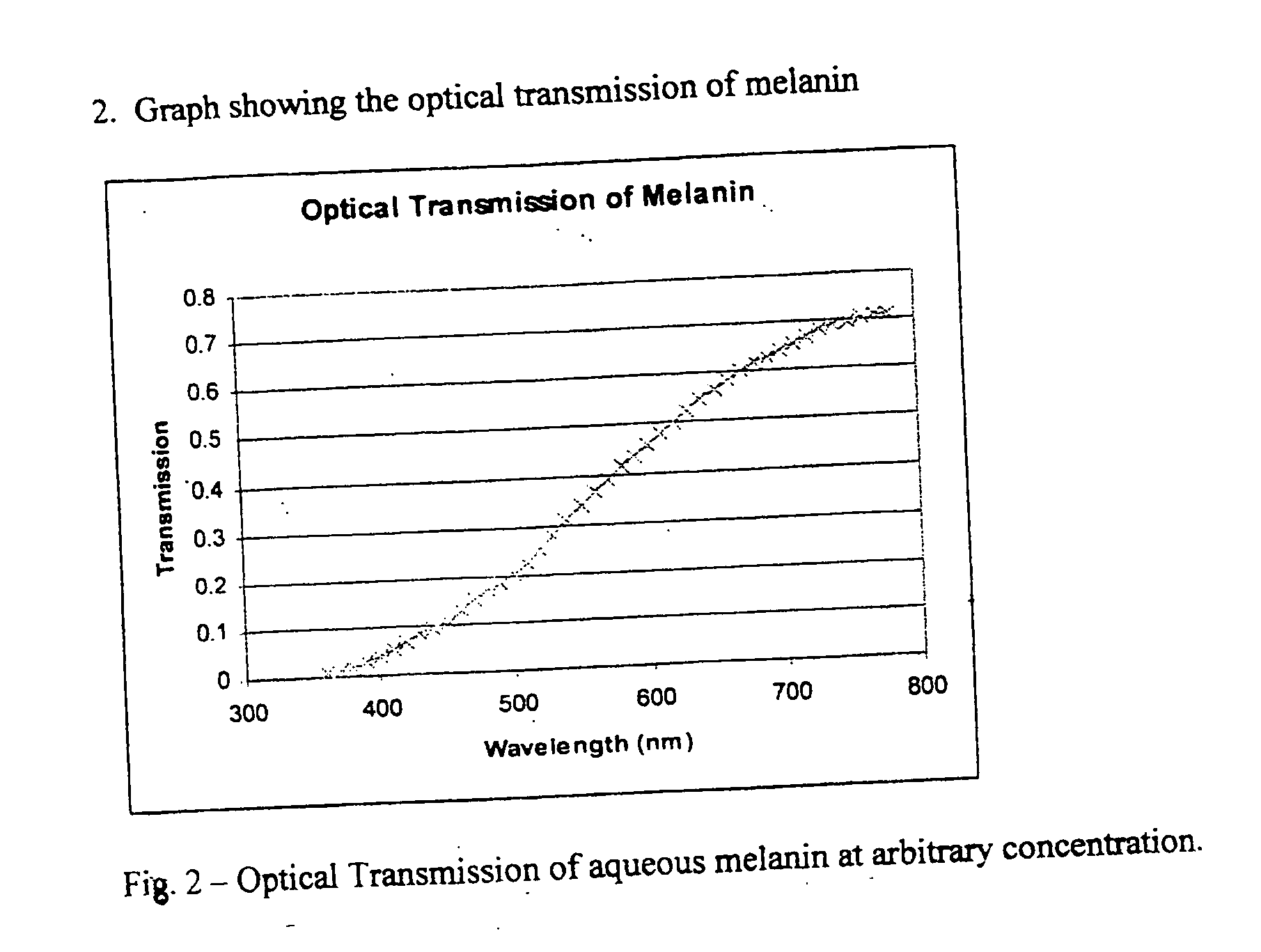Methods for tinting plastic films and sheets with melanin
- Summary
- Abstract
- Description
- Claims
- Application Information
AI Technical Summary
Benefits of technology
Problems solved by technology
Method used
Image
Examples
Embodiment Construction
[0034] This is a method for tinting a lens with a large molecule, such as melanin, through the process of diffusion in which steps are taken to increase the rates of diffusion. Normally such steps involve heating; however this is limited in practice by the boiling temperature of water, which is the solvent of choice by the industry. And nominally, the temperature selected is very close to boiling. Another step usually taken to increase the rate of diffusion is the use of surfactants to reduce the hydrophobic barrier.
[0035] In the current application, the diffusion rates are increased by enlarging the pores or microscopic crevices of the plastic surface by chemically etching the surface. Generally, etching causes surface irregularities or holes or pits that cause haze and therefore make such a surface unacceptable for optical or ophthalmic applications. Applicant has found, however, that etching can be done up to the point prior to causing haze, but where diffusion rates have increa...
PUM
 Login to View More
Login to View More Abstract
Description
Claims
Application Information
 Login to View More
Login to View More - R&D
- Intellectual Property
- Life Sciences
- Materials
- Tech Scout
- Unparalleled Data Quality
- Higher Quality Content
- 60% Fewer Hallucinations
Browse by: Latest US Patents, China's latest patents, Technical Efficacy Thesaurus, Application Domain, Technology Topic, Popular Technical Reports.
© 2025 PatSnap. All rights reserved.Legal|Privacy policy|Modern Slavery Act Transparency Statement|Sitemap|About US| Contact US: help@patsnap.com



